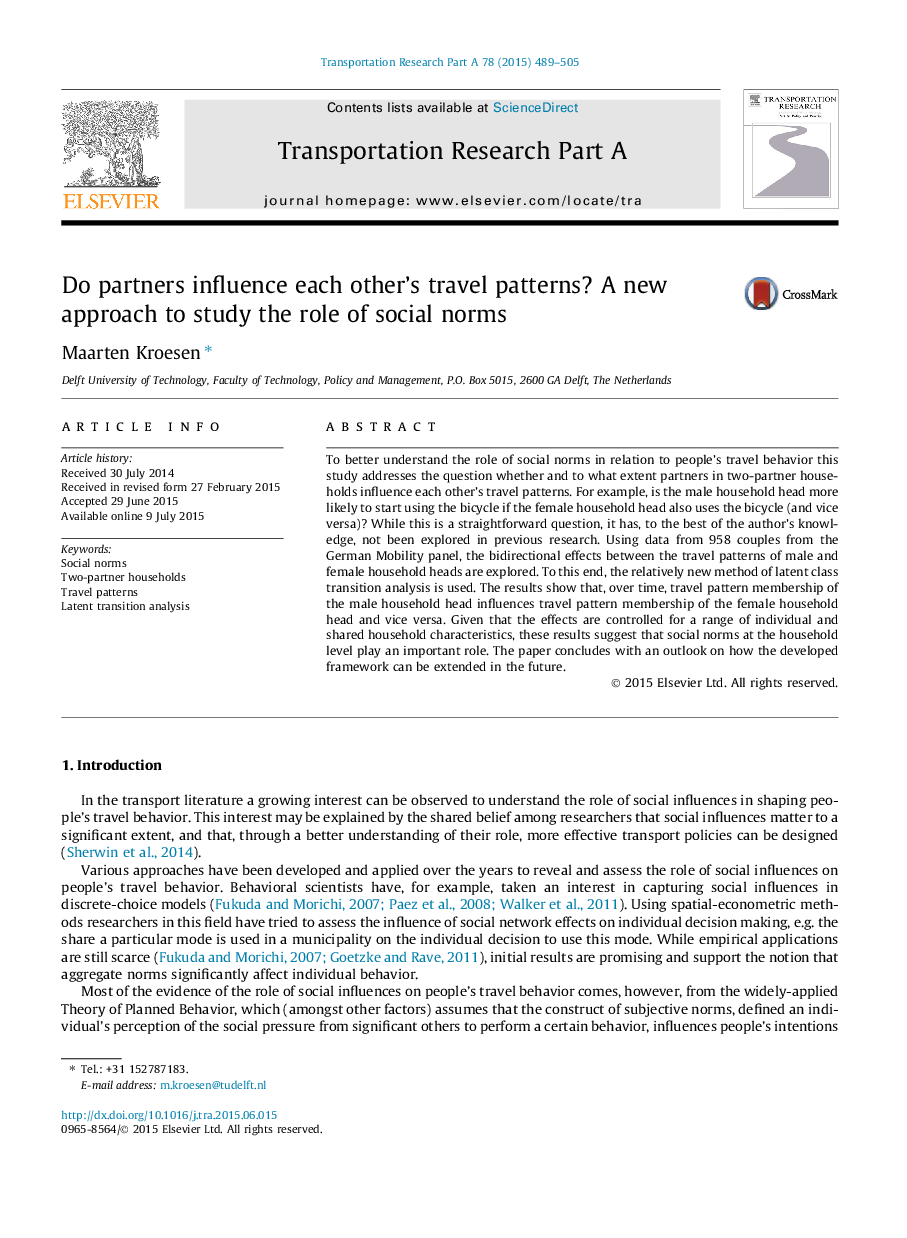| Article ID | Journal | Published Year | Pages | File Type |
|---|---|---|---|---|
| 6781286 | Transportation Research Part A: Policy and Practice | 2015 | 17 Pages |
Abstract
To better understand the role of social norms in relation to people's travel behavior this study addresses the question whether and to what extent partners in two-partner households influence each other's travel patterns. For example, is the male household head more likely to start using the bicycle if the female household head also uses the bicycle (and vice versa)? While this is a straightforward question, it has, to the best of the author's knowledge, not been explored in previous research. Using data from 958 couples from the German Mobility panel, the bidirectional effects between the travel patterns of male and female household heads are explored. To this end, the relatively new method of latent class transition analysis is used. The results show that, over time, travel pattern membership of the male household head influences travel pattern membership of the female household head and vice versa. Given that the effects are controlled for a range of individual and shared household characteristics, these results suggest that social norms at the household level play an important role. The paper concludes with an outlook on how the developed framework can be extended in the future.
Related Topics
Physical Sciences and Engineering
Engineering
Civil and Structural Engineering
Authors
Maarten Kroesen,
